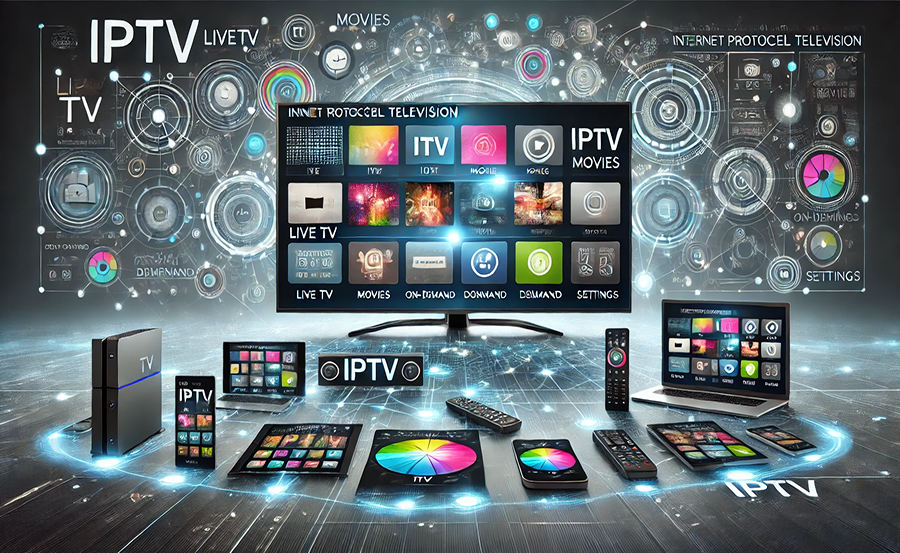In today’s digital age, the choice between IPTV and traditional cable has become more than just a preference for content delivery. As the world becomes increasingly eco-conscious, understanding the environmental impact of these technologies is crucial. Whether you’re opting for state-of-the-art Streaming TV apps or relying on your tried-and-true cable connection, it’s important to acknowledge how these options affect our planet.
Buy 1 Year IPTV Subscription and Enjoy Unlimited Content
The Basics of IPTV and Cable Technology
To fully appreciate their environmental implications, it’s necessary to first grasp the fundamental differences between IPTV and cable. Although both serve the same purpose of delivering television content to homes, they do so in markedly different ways. Let’s break it down:
Understanding IPTV
IPTV, or Internet Protocol Television, transmits media content through the Internet. It leverages the same infrastructure used for browsing – your household internet connection. Streaming TV apps operate under this technology, tapping into available internet bandwidth to deliver video content.
- Users often access IPTV through smart TVs or external devices like smart boxes and dongles.
- Unlike traditional cable, IPTV provides on-demand content by using packet-switched networks.
- The flexibility of mixed media, such as live television and streaming content, is a major draw.
Cable Television: The Traditional Choice
Cable TV, on the other hand, relies on an extensive network of coaxial cables stretching across neighborhoods. This physical infrastructure is dedicated solely to television signals, separate from the internet services in most homes.
- Cable connections are maintained through repeater stations that amplify the signal strength.
- Typically, cable TV offers a set schedule of programming with fewer customization options compared to IPTV.
- While reliable, installing and maintaining the cable network entails considerable physical resources and labor.
The Environmental Impact of IPTV Services
As streaming services proliferate, a new conversation about energy consumption emerges. Here’s how IPTV stands under the environmental lens:
Energy Consumption of Streaming
Streaming content has become part of our daily lives. This popularity raises concerns about the energy demands of data centers powering IPTV services. Data centers, often termed the digital economy’s backbone, require constant cooling and power, contributing significantly to carbon emissions.
Online Infrastructure and Resource Use
IPTV relies heavily on internet infrastructure, and the continuous rollout of high-speed broadband can lead to increased demand for network hardware. Manufacturing these components involves resource extraction and produces e-waste, impacting the environment if not managed responsibly.
The Environmental Impact of Cable Television
Cable TV isn’t exempt from environmental scrutiny. The nature of its delivery mechanisms presents distinct ecological considerations:
Physical Infrastructure
The installation and maintenance of an extensive cable network demand significant resources. This includes the creation of cables, poles, junction boxes, and maintenance vehicles, which contribute to carbon footprints.
Life Cycle of Cable Equipment
From manufacturing set-top boxes to the cables themselves, each piece of hardware eventually reaches the end of its lifespan, leading to challenges such as recycling and disposal. The metal and plastic components must be processed, which can harm both the environment and public health if not done properly.
Green Initiatives and Innovations in IPTV
Recognizing their environmental impact, many IPTV service providers are now striving to innovate sustainably. Such initiatives not only aim to reduce carbon emissions but also appeal to environmentally-conscious consumers.
Efficient Data Centers
Many companies are investing in renewable energy sources for their data centers. Solar and wind power are increasingly utilized to power the massive energy needs of these facilities, setting a benchmark for corporate responsibility.
Reducing Bandwidth Waste
IPTV systems are improving data compression techniques to lessen data usage without sacrificing video quality. This innovation reduces the strain on networks and curtails energy consumption, making streaming more efficient and greener.
Sustainable Packaging Practices
Some IPTV companies are opting for more sustainable packaging for their devices, using recycled materials and minimizing plastic use. These seemingly small decisions cumulatively lead to significant environmental benefits.
Green Initiatives and Innovations in Cable TV
Cable providers too are steering towards greener operations. While adaptations may be slower compared to IPTV, the industry is beginning to recognize the importance of sustainability.
Renewable Energy Integration
Several cable operators are transitioning to renewable energy sources for their headends and operations centers, helping reduce their overall carbon footprint.
Upgrading to Eco-friendly Equipment
Newer cable hardware is designed with energy efficiency in mind, featuring components that consume less power. This transition reduces the operational energy demand, aligning with wider environmental goals.
Consumer Responsibility in Reducing Environmental Impact
The environmental impact of IPTV and cable technology doesn’t solely rest on the companies. End-users can also play a crucial role in minimizing their carbon footprints while enjoying their favorite shows.
Choosing Energy-Efficient Devices
Consumers can opt for energy-star-rated TVs and streaming devices, which consume less power. This choice can significantly cut down household energy use.
Conscious Consumption Habits
Simple habits like turning off devices when not in use, and lowering screen brightness can lead to noticeable reductions in electricity usage over time.
- Regular software updates for streaming devices can also enhance efficiency.
- Choosing the optimal internet package that suits one’s needs prevents unnecessary resource consumption.
IPTV Service Provider Comparison: What to Consider for a Greener Choice?
When comparing IPTV service providers, it’s not just about cost and content variety. Environmental friendliness is becoming a deciding factor for many users. Here’s what to consider:
Renewable Energy Use
Check if the provider invests in renewable energy for their operations. Transparent energy policies can signify a company’s commitment to sustainability.
Device Lifecycle and E-Waste Practices
Investigate how providers manage hardware disposal and recycling. Companies with robust e-waste programs stand out as responsible choices.
Cost vs. Environmental Value
Balancing cost with sustainability might involve financial trade-offs, but the long-term benefits to the environment are worth it. Consider packages that offer both value and minimal environmental impact.
Explore the Best in IPTV Entertainment While Caring for the Environment
IPTV is renowned for its diverse entertainment offerings. However, while exploring the best of IPTV, consumers should not disregard the environmental factors entrained.
Quality Over Quantity
It’s easy to get overwhelmed with the wide array of available content. By curating watch lists with intent and purpose, users can enjoy premium quality viewing experiences, which indirectly promotes efficient data usage.
Embrace Content Recycling
Engage in watching and promoting content that reflects sustainability and environmental awareness. This practice can not only enrich knowledge but also subtly influence viewing habits industry-wide.
Challenges and Opportunities on the Horizon
Both IPTV and cable face distinct challenges in their quest for sustainability. However, these challenges open up avenues for innovation, leading the path towards a greener entertainment industry.
Innovating Network Technologies
Developments in network efficiency and green tech deployment in IPTV and cable sectors promise enhanced sustainability and reduced environmental impact in years to come.
Public Awareness and Regulatory Impact
Regulations crafted to encourage sustainable practices, alongside growing consumer awareness, can push both industries towards greener paradigms. How swiftly these changes take hold depends on ongoing collaborative efforts between stakeholders.
FAQ Section: Common Questions About IPTV vs. Cable’s Environmental Impact

1. How does IPTV impact the environment differently from cable?
IPTV primarily affects the environment through energy consumption at data centers due to its reliance on internet infrastructure. Cable impacts revolve around the physical installation and maintenance of network hardware.
2. Can switching from cable to IPTV reduce my carbon footprint?
It’s possible if the IPTV service uses green technology, such as renewable-powered data centers and energy-efficient devices. However, personal usage habits also play a significant role in overall impact reduction.
3. What are IPTV providers doing to become more sustainable?
Many IPTV providers are investing in renewable energy sources, developing efficient data compression methods, and adopting eco-friendly packaging practices for their devices.
4. Is one service definitively better for the environment?
There isn’t a definitive answer as both IPTV and cable have environmental advantages and disadvantages. The choice depends on the efficiency and sustainability practices of individual service providers and consumer habits.
5. What personal steps can I take towards greener viewing?
Suggestions include using energy-efficient streaming devices, being conscious of streaming habits, keeping devices off when not needed, and supporting content and services that align with environmental conservation principles.
6. Does upgrading to 5G improve the environmental impact of IPTV?
While 5G offers faster speeds and can enhance IPTV efficiency, its environmental impact largely depends on the sustainability practices behind the 5G infrastructure setup, which varies regionally.
7. Are cable companies adopting renewable energy solutions?
Yes, some cable providers have begun integrating renewable energy, albeit at a slower pace compared to IPTV services, in their operations to mitigate environmental impacts.
The Best IPTV Services Compatible with Perfect Player on Android





